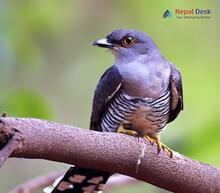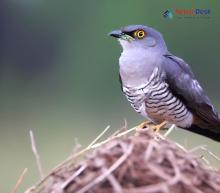Nestled amidst the breathtaking landscapes of the majestic Himalayas, Nepal is a treasure trove of avian diversity. With an array of unique birds residing within its borders, bird enthusiasts from around the globe flock to this country to catch a glimpse of these enigmatic species. Among Nepal's varied birdlife, one genus that captivates birdwatchers and ornithologists alike is Cuculus – a group of cuckoos renowned for their distinct call and intriguing behavioral patterns.
Getting Acquainted with Cuculus: Meet the Cuckoos of Nepal
The Tibetan Cuckoo (Cuculus saturatus) and Common Cuckoo (Cuculus canorus) are two widely recognized members of the Cuculus genus that grace Nepal's skies. Sporting sleek bodies and long tails, these cuckoos have adapted well to soaring effortlessly through the air, fitting seamlessly into their rich habitats.
What sets Cuckoos apart from other avian species is their unique breeding behavior. As brood parasites, Cuculus cuckoos lay eggs in the nests of other bird species, leaving surrogate parents to care for their offspring. This fascinating behavior has long been a topic of research and endless fascination in the world of ornithology.
Exploring Nepal's Birding Hotspots
For those eager to catch sight of these elusive birds, there are several prime locations throughout Nepal where sightings are more likely. One such hotspot is Shivapuri Nagarjun National Park on Kathmandu’s outskirts – an area replete with dense forests that serve as suitable habitats for both resident and migratory cuckoos.
Another premier destination for witnessing Cuculus members up close is Koshi Tappu Wildlife Reserve in eastern Nepal, a Ramsar site boasting over 250 recorded bird species. The reserve's vast wetlands and adjacent grasslands deliver optimal nesting grounds for Cuculus cuckoos and provide ample opportunities for keen birdwatchers to observe their captivating behavior.
Conservation Concerns and Efforts
Though the intrigue surrounding Cuculus genus birds is undeniable, dwindling populations due to habitat loss and climate change are a cause for concern. As with countless other species, preserving Nepali birdlife requires enhanced conservation efforts from both local and global communities.
Luckily, organizations like Bird Conservation Nepal (BCN) are working tirelessly to address these challenges through research, public education, and habitat restoration. To continue enjoying the wonders of the Cuculus genus in Nepal's breathtaking landscapes, it is essential that such conservation actions prevail.
In conclusion, Nepal's rich avian diversity presents a golden opportunity to immerse oneself in the exciting world of birdwatching, particularly with its numerous Cuculus genus members. By appreciating their unique behaviors and supporting conservation efforts, we can ensure that future generations have the chance to marvel at these enigmatic Nepali birds.




